Milo of Croton The Last Piamontini

TRINITY FINE ART




(Florence, 1663 – 1744)
Milo of Croton
Marble, height 168 cm, 65¾ in Signed and dated G.P/F./1740
Marchesi Gerini
LITERATURE
M. Ingendaay, I migliori pennelli. I marchesi Gerini mecenati e collezionisti nella Firenze Barocca. Il palazzo e la galleria 1600–1825, Milan 2013, p. 142.
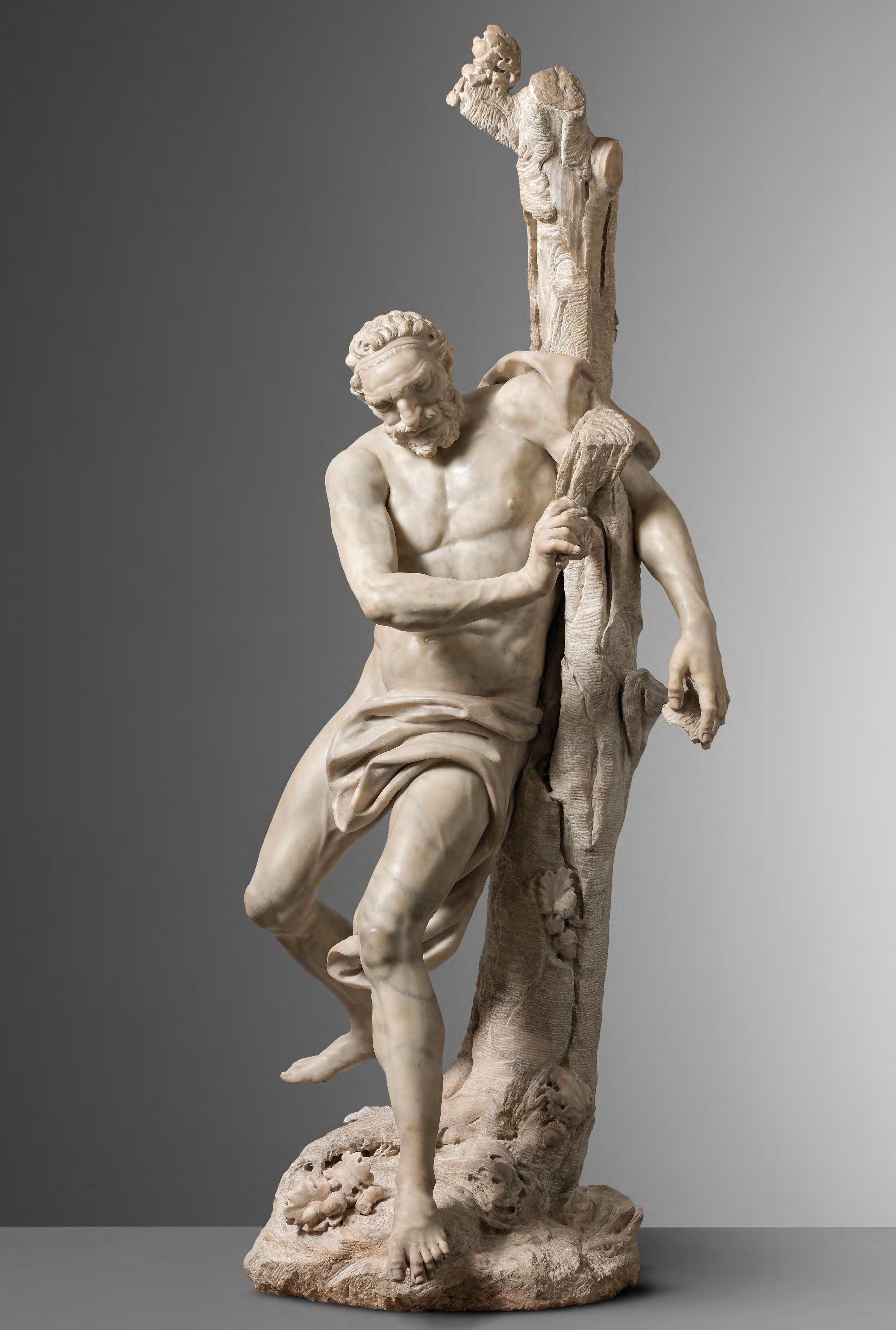

The sculptor Giovan Battista Piamontini, son of Giuseppe Piamontini, and a representative of the Marchese Andrea Gerini and his nephew Carlo Francesco signed an agreement in Florence on New Year’s Day 1761. According to this agreement1 Giovan Battista Piamontini would sell the Gerini family a marble statue by his late father, the better-known Giuseppe Piamontini, and he himself would carve a marble companion piece for it. Giuseppe’s statue was described simply as ‘depicting a Milo’– who Strabo2 tells us was ‘the most renowned of wrestlers’ in the ancient world. His son’s sculpture was to depict a Faun ‘with a kid on his shoulders’.

The statues were intended to occupy a prominent position in two niches in the ‘primo ricetto’ – the first reception hall – of the Gerini palace. This palace was one of the most lavishly decorated patrician residences in 18th century Florence and housed a unique painting gallery that grew from the 17th century onwards to become one of the most important such galleries in Florence. The most recent paintings had been acquired by Andrea Gerini, known for his patronage of such eminent artists as Pompeo Batoni and Giuseppe Zocchi and for his sponsorship of a
series of folio books illustrated with magnificent engravings, including Zocchi’s famous Vedute delle ville e d’altri luoghi della Toscana. Andrea Gerini had also been the driving force in the palace’s recent decoration and the two statues for the ‘primo ricetto’ marked the end of his campaign to refurbish the family residence.
Acting on the description provided in the document of 1761, Don Natale Maffioli was able to locate the two works of the two Piamontinis in the Fondazione Gerini in Rome. Maffioli noticed that the Milo was signed with the initials of the sculptor and dated 1740 (‘G.P. / F. / 1740’). It was thus possible to identify the pair with absolute certainty when it appeared on the art market, also thanks to the sculptures’ ascertained Gerini provenance.
Andrea and Carlo Francesco Gerini thus became the owners of the last works carved by Piamontini father and son. The Milo is Giuseppe’s last known marble statue and one of his last works.
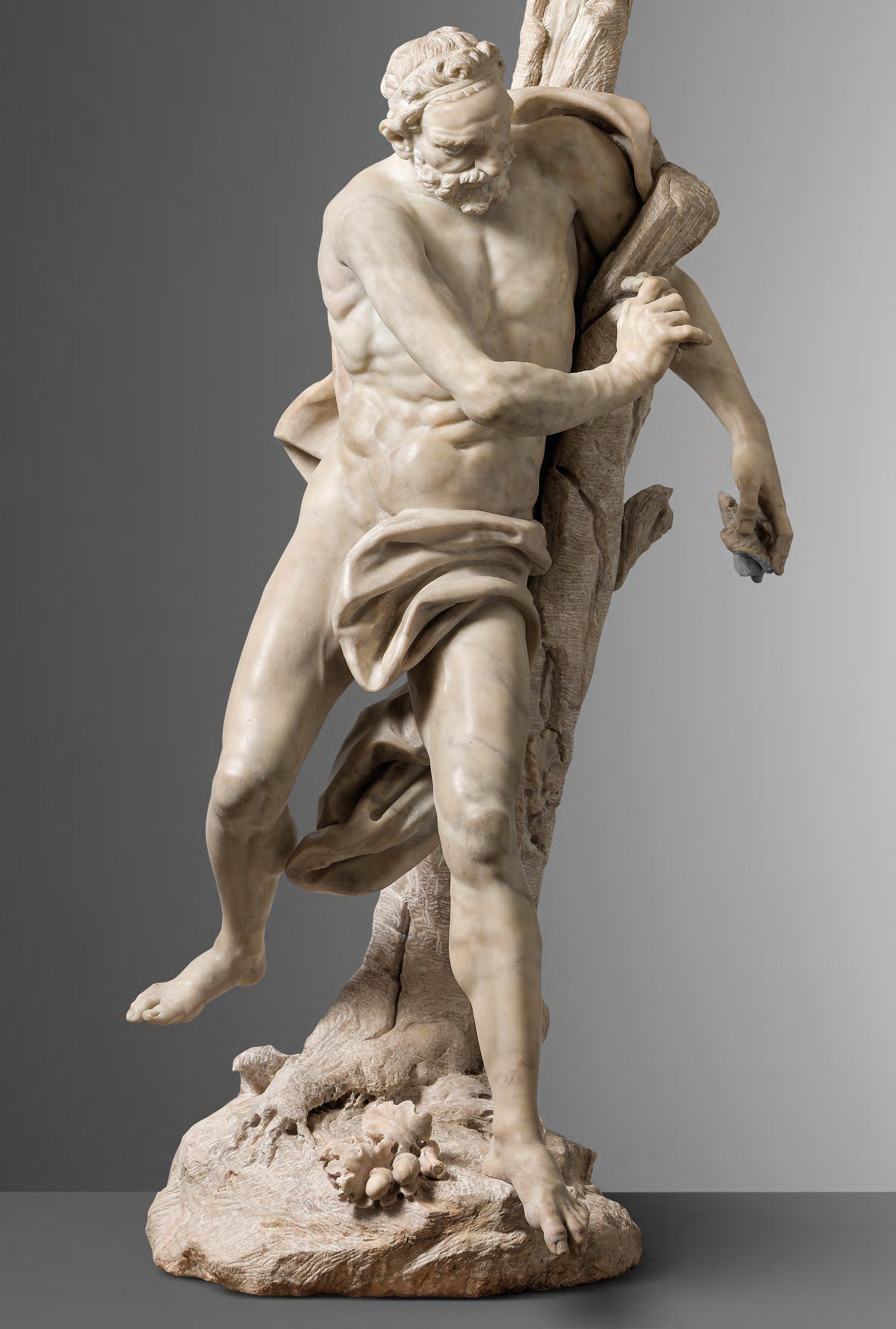

The Milo shows no signs of the fatigue associated with advanced years, even though Piamontini would have been seventy-seven years old when it was completed.
It can probably be identified with a Milo which Giuseppe showed at an exhibition that the Accademia del Disegno – the art academy of Florence – held in the convent of the Santissima Annunziata in 1729.3


A total of eight works by the sculptor were shown on that occasion. The owners of these marble works are not mentioned in the exhibition catalogue, other than for the now lost Bust of Magalotti. But given that the catalogue regularly refers to the ownership of the works displayed at this exhibition, this would suggest that these sculptures were in fact made with an eye to selling them and that they were still with the sculptor, whose workshop stood just around the corner from to the exhibition venue in the Sapienza and who could thus have easily brought his sculptures over to show them to the public on this prominent occasion.4 If the Gerini Milo is indeed the one shown in 1729, then that would mean that the sculptor worked on it – on and off – for over a decade, an assumption
which appears to be borne out both by the degree of perfection in its finish and by the weakness we have noted in his later works.
The contention that Piamontini carved only one Milo is also endorsed by the fact that his marble statues are only known to exist in individual versions.
Evidence against our assumption, on the other hand, includes the fact that he would have embarked on carving a complex work at his own expense without knowing whether he could ever sell it – a practice not otherwise known in the sphere of Late Baroque Florentine marble sculpture.

Otherwise, the Milo may be a work commissioned by a foreign patron but for some reason never delivered. Left in the sculptor’s workshop, it finally came into the possession of his son who kept it almost until he died – a clear sign of the esteem in which it was held.
Whether the Gerini Milo was made by 1729, was begun before 1729 but completed in 1740, or was in fact a second, 1740, version, the sculptor must have attached a great deal of importance to this model.

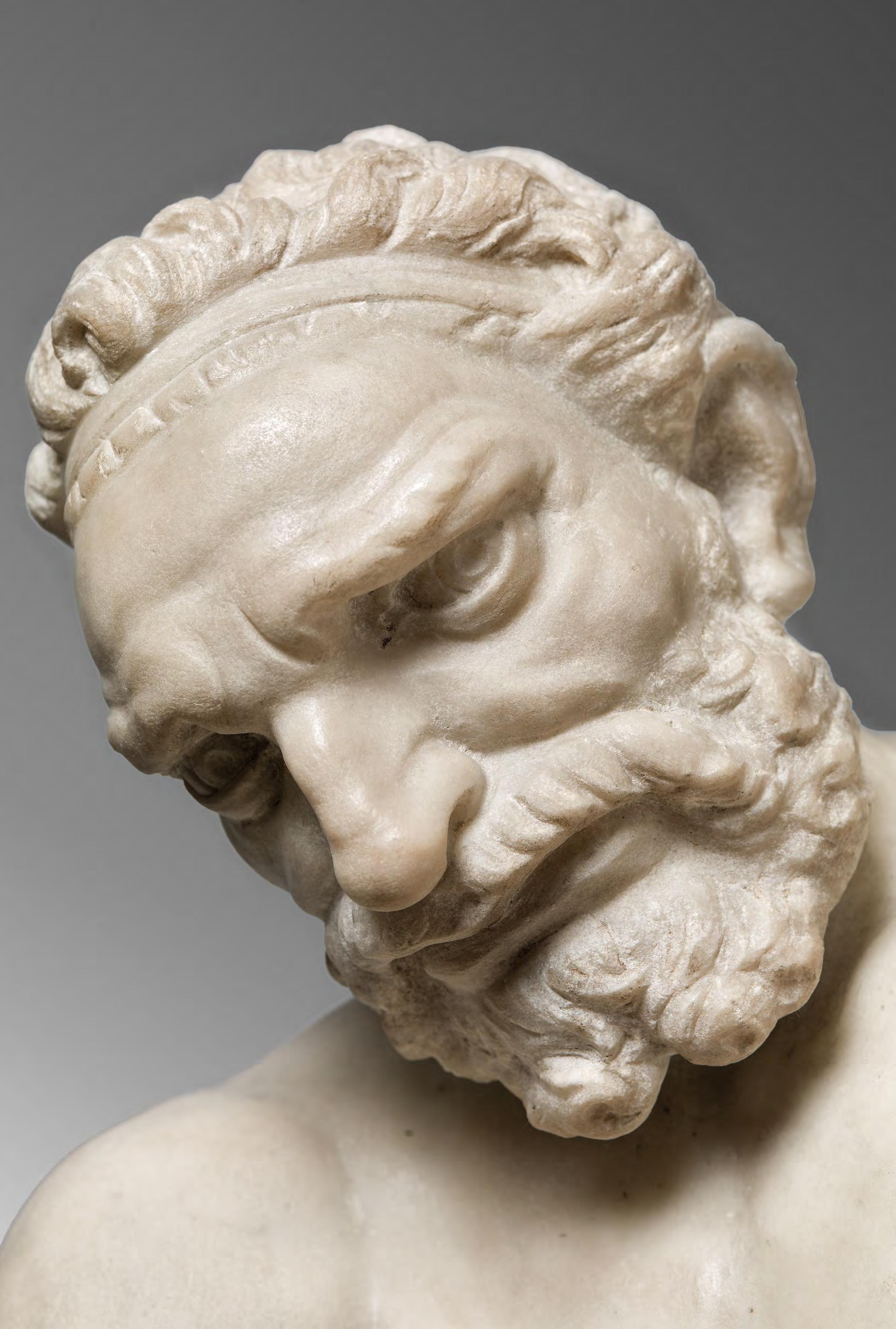
In his above-mentioned autobiographical note, Giuseppe Piamontini emphasises the importance of his formative years under Ferrata in the Tuscan Academy in Rome (between 1681 and 1686), ‘where he profited greatly in the study that he made of Greek Antiquity’.5 This attachment to the Antique is also highlighted in the short Life of Piamontini written by one of 18th century Florence’s greatest art collectors and art historians, Francesco Maria Niccolò Gabburri who was also one of the sculptor’s patrons.6 According to this writer (who was familiar with Piamontini’s autobiographical note), the sixteen-year old sculptor was sent to Rome ‘in order to acquire knowledge of the Antique’.7 Piamontini’s art is indeed frequently retrospective, and this retrospection is not confined to ancient Greek or Roman prototypes but extends to the great masters of the Italian Renaissance both in painting and in sculpture.8 In his statue Piamontini has chosen to represent the Death of Milo of Croton.
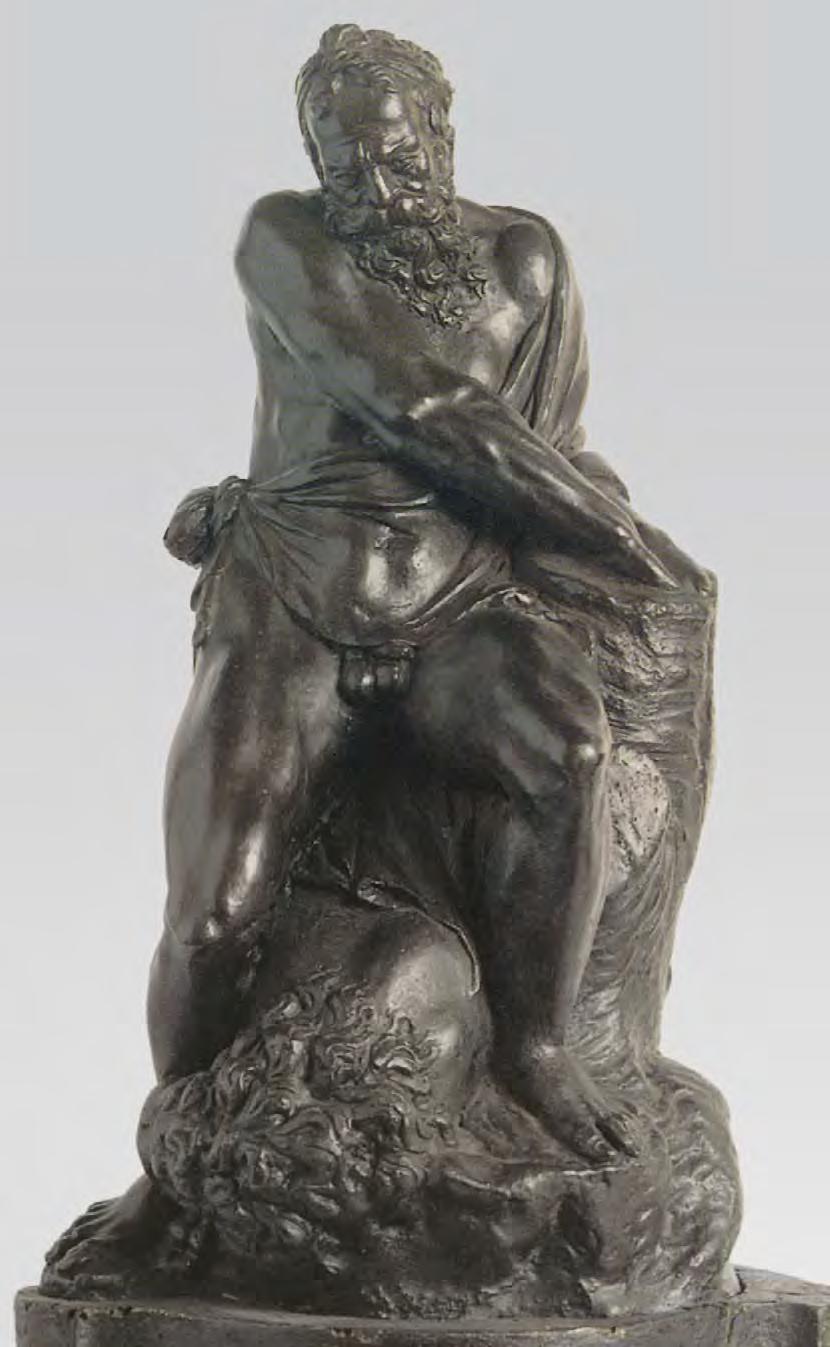
Milo was an athlete of legendary strength, and ancient sources such as Pausanias and Valerius Maximus record his high-protein diet and his intense training programme which consisted, among other things, in carrying a four-year old bull on his shoulders before slaughtering and eating the animal in a single day. The ancient authors add that he started lifting the animal as a boy when it was a calf and repeated the excercise daily as both he and his ‘weight’ grew day by day. He
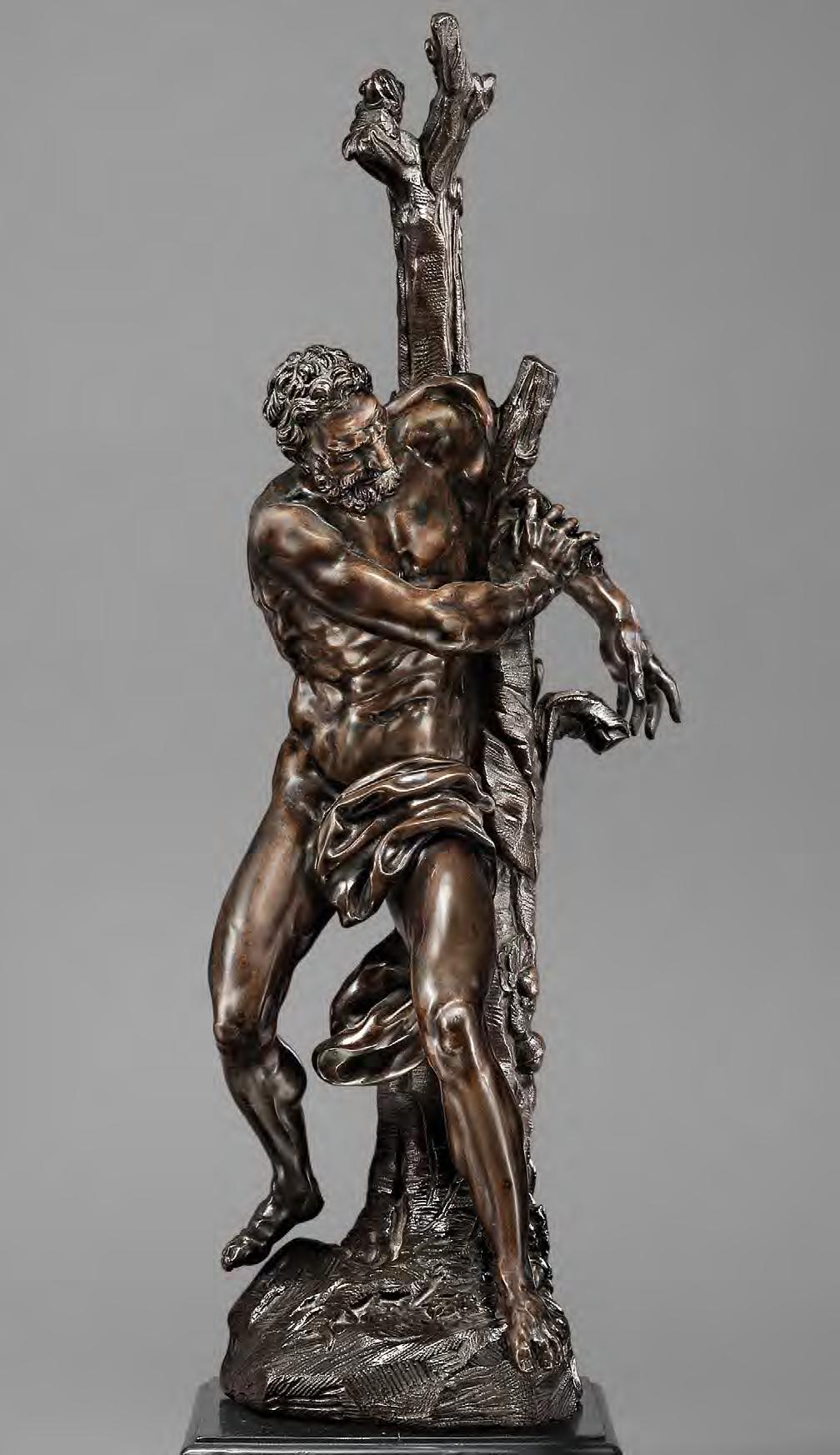
came to a tragic end one day when, wishing to display his unparalleled strength, he attempted to remove the wedges holding the two sides of a split tree trunk apart. The wedges fell out and he was trapped, falling prey to a pack of wolves, or alternatively of lions in some of the rare sculptural depictions of the story, for instance a small bronze attributed to Alessandro Vittoria now in the Galleria Giorgio Franchetti
at the Cà d’Oro in Venice or Pierre Puget’s masterpiece – a large marble group carved for Louis XIV in 1683 and now in the Louvre. That Piamontini opted for a theme uncommon in sculpture implies either some knowledge of Puget’s group or knowledge of the ancient literary sources that refer to the story. The former is a possibility because another Florentine sculptor was present in Paris in 1682 and is known to have portrayed King Louis XIV in Versailles, where Puget’s statue –dedicated to that king – was unveiled. Piamontini’s rediscovered Milo is thus only the second known Baroque sculptural depiction of Milo’s tragic death.
The story is mentioned in Strabo9 and Pausanias10 – two sources that would have not been easily accessible. But that the sculptor was aware – even if only indirectly – of ancient literary sources relating Milo’s death, is revealed by a significant detail: the depiction of a cord around the athlete’s head which could be either the tainia – the headband worn by those who, like Milo, had won in the ancient Olympic Games – or a cord that he is known to have been able to break with his bulging forehead veins.
Unlike in the bronze attributed to Vittoria but in a manner reminiscent of Puget, Piamontini created a powerful image by focussing on the struggling hero alone (in other words, without including any of the wild beasts that devoured him) and by probing the technical boundaries of working in stone.
Milo’s right leg, carved completely in the round, hovers free while his left leg serves to stabilise the boldy carved marble block, though its heel barely touches the ground and is again carved completely in the round. The same is true of the athlete’s right arm, which almost touches the split tree trunk, his right hand holding what appears to be a wedge, while his other arm is trapped in the trunk and dangles uselessly from it. This left hand also holds a wedge and is admirably carved, a large amount of material having been removed from beneath through the skilled use of the chisel and drill.
In rendering the athlete’s body, the artist has avoided exaggerating his muscular development, using torsion instead to underscore his strength. The surface of the statue is polished, as is that of the flowing,
twisting, almost serpentine drapery, conveying the image of a gymnast performing some complex exercise rather than that of a man facing his death. The polished surface contrasts with the rugged surface of the tree – an oak, chosen to allude both to Milo’s athlethic prowess and to his strength, now tragically defeated.
This was a bold composition for a work in marble because it posed these huge technical challenges.
Piamontini also made a model of this composition for a small bronze cast. Two casts taken from the model are now one at the Walters Art Museum in Baltimore and one in the collection of Mr. and Mrs. J. Tomilson Hill in New York,11 while a smaller copy by his son has also passed through the art market. The model was first attributed to the sculptor by Manfred Leithe-Jasper and Patricia Wengraf.12 A bronze cast of a Milo Splitting the Oak after a ‘model by Piamontini’ is also recorded in the Borri collection in Florence in 1770 and 1792, and may thus be associated with these bronzes.13
In the small bronzes – unlike in the marble where the nature of the material would make it impossible – both legs and the right arm are modelled completely in the round.
As in many such cases, Piamontini would first have devised a model for a bronze statuette which he would then have translated into marble. Nevertheless, it is impossible to ascertain which material preceded which in the compositions and models on which the sculptor subsequently based both a small bronze and a – not so large – marble statue. Known cases of such duplication in his career include a Faun Carrying a Young Satyr, a group comprising a Seated Jupiter and a Seated Juno, two groups of Bacchus and Ariadne and Venus and Cupid probably conceived as a pair, and two groups of Fighting Putti. There is also a spectacular Fall of the Giants carved in marble for the Palazzo Feroni – now Palazzo Ferragamo – a bronze version of which is now in the Museum of Fine Arts, Boston.14 The coexistence of so many small bronzes and non-monumental marble works after the same model within the oeuvre of a single sculptor is unique. It is as though the artist wished to prove beyond doubt that his artistic prowess was not restricted by the choice of medium. Alongside his master Giovan Battista Foggini and bronze sculptor Massimiliano Soldani Benzi, Giuseppe Piamontini was one of the leading sculptors of the Late Baroque era in Florence. Like them he studied in Rome, and like Foggini (but unlike Soldani) he worked both in marble and in bronze. Of all his contemporaries studying at the Tuscan

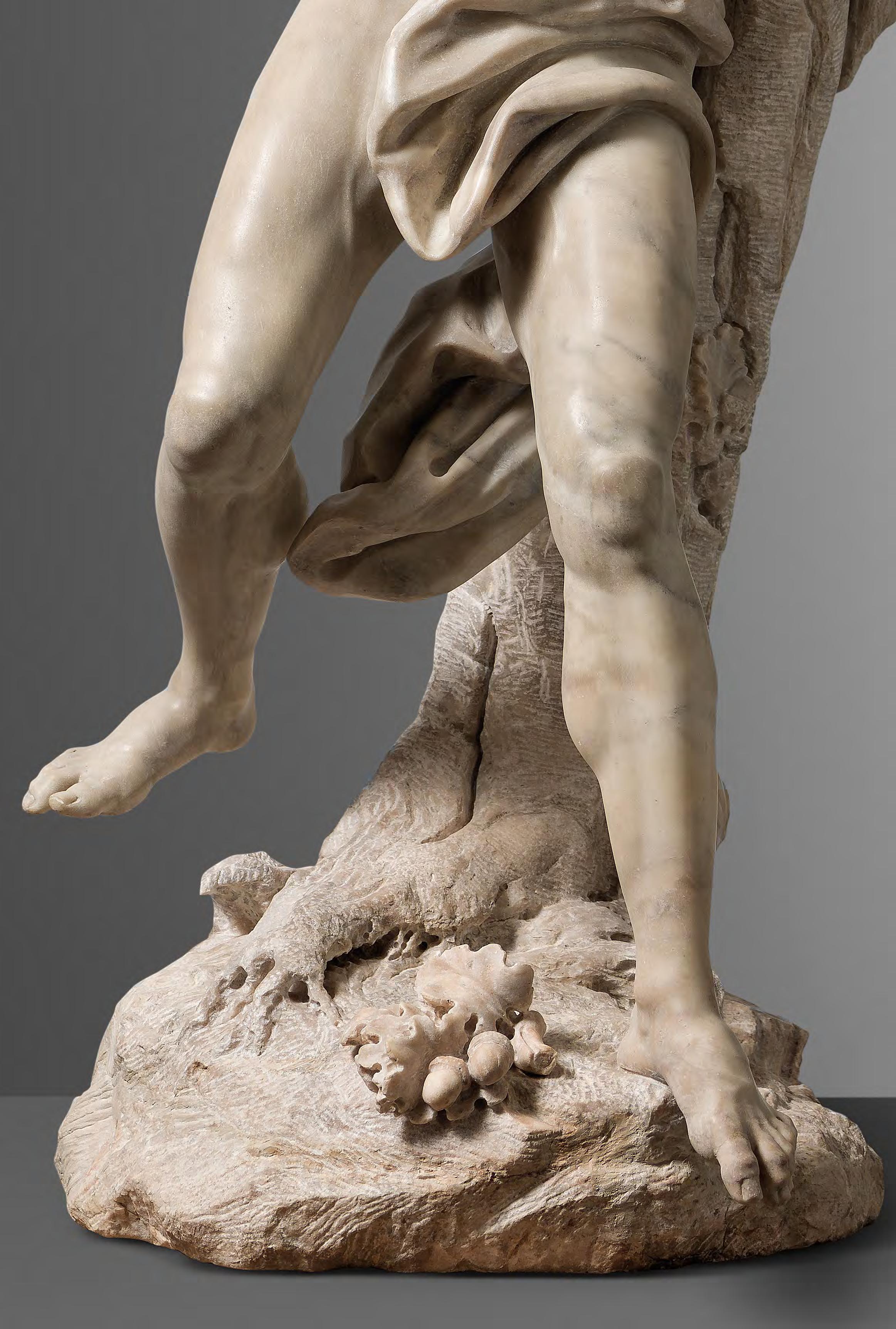
Academy in Rome, he was the only sculptor to begin carving a marble statue of St. John the Baptist (for the Baptistry in Florence) while still in training and the only one known to have made a ‘large model of Jupiter seated on the Eagle’ which he was eventually to translate into the large marble statue mentioned earlier.15 None of the other Tuscan sculpture students worked on a large-scale project during their apprenticeship in Rome. While still a student, Piamontini also made the point that carving a composition in marble or casting it in bronze was all one to him.16 He was able to practice with both marble and bronze after the Grand Duke granted him the use of a workshop in the Sapienza which included a bronze foundry.17 There he fulfilled his early promise, shortly after his return to Florence, by carving two impressive large marble works for the Feroni Chapel in the basilica of the Santissima Annunziata, the Fortuna Nautica (Fortune at Sea), and the Pensiero (Thought), commissioned by Francesco Feroni.18 The Pensiero is based on Michelangelo’s Sistine Chapel Ignudi, of which it is a powerful Baroque translation into a boldly conceived and skilfully carved marble statue. There was to be little opportunity for such an important sculptural commission in Florence after the completion of the Feroni Chapel. Yet whenever such an opportunity did arise, patrons would turn to Piamontini, also because of the disability of Foggini, the only other major marble sculptor in the city. Feroni himself soon commissioned another marble work from Piamontini in which he was once again able to display the extent to which his technical skill was equal to the challenge of an ambitious composition. Praised as ‘stupendous’ (‘stupendo’) by Gabburri, a large relief of the Fall of the Giants was completed in 1705 for the entrance to the former Feroni – now Ferragamo – palace, where it may still be seen today. Its composition was once again inspired by Michelangelo, this time by his early Battle of the Centaurs in the Casa Buonarroti in Florence. Jupiter overlooks the action narrated through a technical tour de force that has no parallel in contemporary Florentine carving. Not even the limits of the material could stop the artist from telling the story his own way, as shown by the prop between the club held by the giant on the left hand side of the relief and the foot of another, fallen, giant. It is to this tradition based on probing the limits of a medium to the extreme that the Gerini Milo unquestionably belongs, making it one of the most outstanding products of Florentine Late Baroque marble sculpture. The extent of Piamontini’s inventiveness and of his all-
encompassing output is shown by a parallel development in the domain of bronze sculpture. Between the Feroni chapel (which was completed in 1693) and the 1705 Feroni relief, Piamontini also made three important bronzes, all for Grand Prince Ferdinando, the son of Grand Duke Cosimo III. Besides a now lost small equestrian monument of the prince (the first version of the cast shown in 1729) which was the last of its kind in the history of Florentine bronze sculpture, these included the Bargello Faun with a Kid and its pendant, a Faun Carrying a Satyr, of which two versions are known, one in a private collection in London, the other in the Wellesley College Museum.19 These two works are the first of a type of bronze statuette distinguished by its above-average size in comparison with traditional bronzetti or small bronzes.
The acquisition of the two marble statues by Andrea and Carlo Francesco Gerini marks the zenith of this family’s art patronage. Andrea Gerini had inherited the palace in the entrance of which they were to be displayed, together with a huge fortune and a considerable picture gallery founded in the 17th century. The Gerini bought the palace, situated in present day Via Ricasoli, from one of the oldest and wealthiest aristocratic families in Florence, the Salviati.20 In 1758, Andrea Gerini also acquired the building next door and commissioned a new and impressive staircase for the entire complex. This staircase seems to have been completed by the early 1760s.21 It was the last architectural project promoted by Andrea and the acquisition of the two marble statues is best understood in this context. The statues were bought to adorn the entrance to the newly enlarged palace and to the new, grand, staircase.
Andrea Gerini was one of the foremost patrons of the arts in 18th century Florence and an eminent figure in the city’s cultural life. A typical representative of the Enlightenment, he corresponded with numerous scholars and writers on artistic matters in Italy and abroad, the most famous of them perhaps being Pierre-Jean Mariette.22 The Gerini picture gallery was greatly enlarged by Andrea Gerini’s acquisitions. But instead of buying pictures only in Florence, he made use of his relations and connections throughout Italy to acquire works by the most modern and most renowned painters of his time. For this

he first turned to Rome, where he bought extensively by using his cousin Domenico Martelli as an agent. He chose paintings by Giovan Battista Panini and Pompeo Batoni with whom he also exchanged a long and fascinating correspondence.23 He also bought in Venice and in Bologna, thus following the lead of the Grand Prince Ferdinando who was the first serious collector in Florence to look with interest at Emilian and Venetian pictures. Finally, he even turned his attention to the Neapolitan painter Francesco Solimena.24 In Rome and Venice he entertained close personal relations with eminent literary figures as Giovanni Bottari and Anton Maria Zanetti.25 With Zanetti in particular, Andrea Gerini shared a common passion for engravings. Among the many artists whom Andrea Gerini protected, the most important was Giuseppe Zocchi, famous for his crisp, magnificent engravings.26 But Zocchi, who was offered hospitality in the Gerini palace where he stayed for many years, also painted part of the frescoes adorning the palace. Among the various frescoes he painted there, one depicts the Allegories of the Arts – an image alluding to the art patronage of Andrea Gerini. But the most successful and best-known editorial project promoted by Andrea was the above-mentioned 1745 Vedute delle ville e d’altri luoghi della Toscana, which was preceded a year earlier by the Vedute delle principali contrade, piazze, chiese e palazzi della città di Firenze. Such were the patrons who turned their attention to Giuseppe Piamontini’s Milo and commissioned the Faun from his son, Giovan Battista. In Florence in 1761, the Milo was the last available marble statue of the Florentine Late Baroque era and the Faun one of the first Neoclassical sculptures ever carved there. That such works were combined into a novel pair by one of the most sophisticated art patrons of that city in order to adorn one of its most prominent and most recently and lavishly decorated aristocratic residences makes the acquisition of the Gerini Piamontinis one of the milestones in the history of Florentine art patronage.
We are grateful to Dr. Dimitrios Zikos for the information provided.
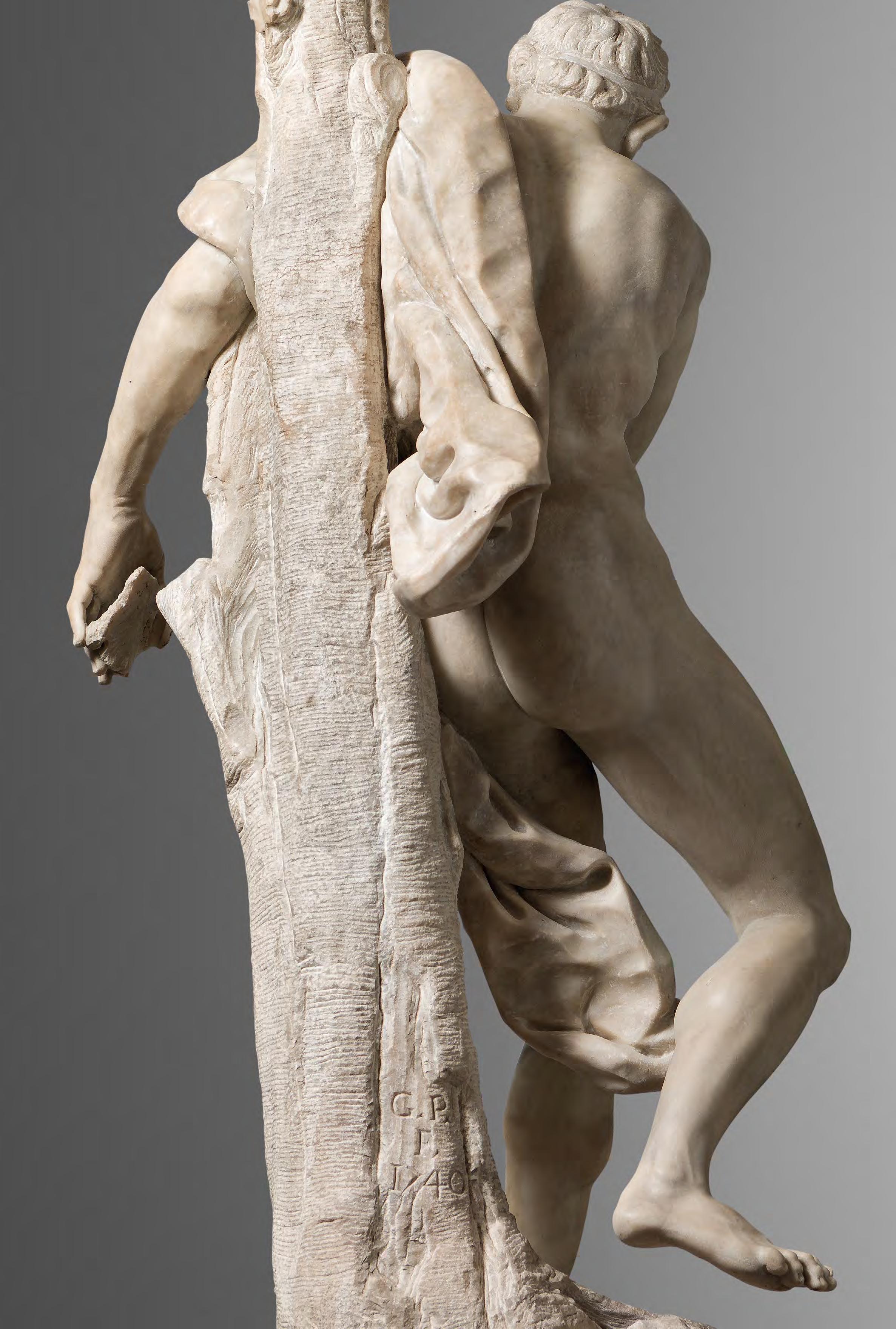
1 The agreement was published by Martina Ingendaay, I migliori pennelli. I marchesi Gerini mecenati e collezionisti nella Firenze barocca. Il palazzo e la galleria 1600–1825. 2 vols. Florence 2013, vol. 2, doc. 136, pp. 98ff.
2 Geographica, 6.1.12
3 F. BorronI SalvadorI, Le esposizioni d’arte a Firenze dal 1674 al 1767, in: Mitteilungen des Kunsthistorischen Institutes in Florenz, XVIII, 1974, pp. 1-165, p. 110.
4 D. ZIkoS, Piamontini’s Juno and Jupiter re-discovered, London, Daniel Katz Ltd., 2011.
5 K. lankheIt, Florentinische Barockplastik, Munich 1962, p. 252, doc. 46.
6 For this writer, see G. PerInI, Gabburri, Francesco Maria Niccolò, in: Dizionario biografico degli italiani, vol. 51, (Rome, 1998), pp. 8-10.
7 F.M.N. gaBBurrI, Vite de’ Pittori (ms., Florence, Biblioteca Nazionale Centrale, Pal. E.B.9.5), fol. 28v
8 He possibly owned a cast after a Giambologna Venus sold by his son Giovan Battista to Carlo Ginori; D. ZIkoS, Prince Johann Adam Andreas I of Liechtenstein and Massimiliano Soldani Benzi. The Late Baroque Florentine Bronze Sculpture, in: Baroque Luxury Porcelain. The Manufactories of Du Paquier in Vienna and of Carlo Ginori in Florence, catalogue of the exhibition (Vienna, Liechtensteinmuseum, 10 November 2005 – 29 January 2006, ed. by J. kräftner, Munich and elsewhere 2005, pp. 157-177: 158.
9 Geographica, 6.1.12
10 Hellados Perieghesis, 6.14.8
11 D. ZIkoS in: P Wengraf, Renaissance & Baroque Bronzes from the Hill Collection, London 2014, cat. 19, pp. 220-225
12 M. leIthe-JaSPer, P. Wengraf, p. 260, fig. 1.
13 D. ZIkoS, ‘A Kleinplastik collection in Regency Florence: Giovan Battista Borri’s bronzes and terracottas’, in: P Wengraf, Renaissance & Baroque Bronzes from the Hill Collection, London 2014, pp. 36-67: 57.
14 D. ZIkoS, Giuseppe Piamontini, Il Sacrificio di Isacco di Anna Maria Luisa de’ Medici Elettrice Palatina. Milano: Carlo Orsi, 2005, p. 41; ZIkoS 2011 (as note 4), p. 24 and p. 28.
15 ZIkoS 2011 (as note 4), p. 11.
16 lankheIt 1962 (as note 5), p. 286, doc. 365.
17 ZIkoS 2005 (as note 14), p. 41.
18 Work on the Feroni chapel lasted between 1691 and 1693.
19 ZIkoS 2005 (as note 14), p. 48 and figs. 29-31.
20 Ingendaay 2013 (as note 1), pp. 38-39.
21 Ingendaay 2013 (as note 1), pp. 41-42.
22 Ingendaay 2013 (as note 1), ad indicem.
23 Ingendaay 2013 (as note 1), pp. 193-195.
24 Ingendaay 2013 (as note 1), pp. 189-190.
25 Ingendaay 2013 (as note 1), ad indicem
26 Ingendaay 2013 (as note 1), pp. 103-123.
Photography: Arrigo Coppitz, Florence
Potographic editing: Pixel Studio, Bresso (Milan)